Ockbrook - Part 01
- A Little Corner Of Church Street
w/e 28 December
2003

Much of the historical information you will read in this series
will have been gleaned from a leaflet published in 1992 in the
"Village Trails in Erewash" series by the Erewash Groundwork Trust with the support
of the Countryside Commission. The Commission ceased its work
in 1999 but its objectives and programmes have continued within
the Countryside
Agency. The leaflet invites us to "journey back in time
along the jittys and alleyways of Ockbrook" and although
it details almost two dozen sites of historical interest, it
leaves the route to one's own making. What better place to start
then than outside the White Swan in Church Street.
|
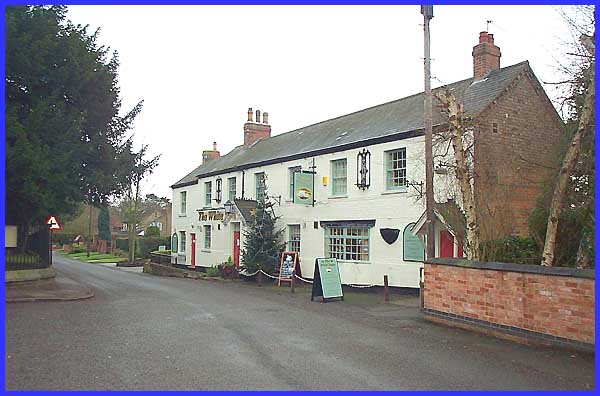
Situated only four miles
from Derby, Ockbrook despite being a small village, is well served
by public houses. I can think of at least four - there may be
more - but this one, the White Swan stands in Church Street and
faces All Saint's Church.
|
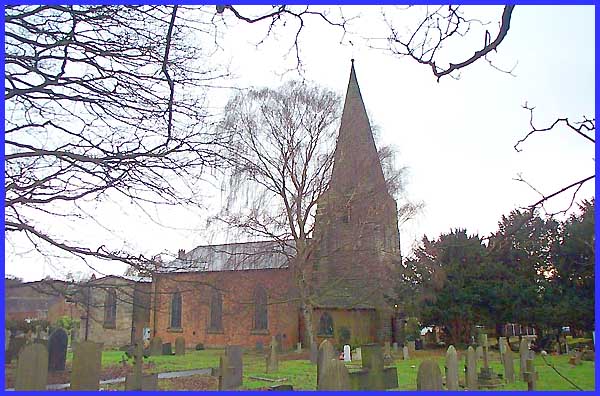
I was unable to gain access
to the Church when I visited and it was difficult to get a good
view of it from the road due to the evergreen trees that obscure
it. A dull and damp afternoon did not aid photography but from
the churchyard I was able to obtain this view of the Church.
All Saints' became the Parish Church about 1550 but the tower
dates from the twelfth century. During the period between these
two dates it had been a chapel under the jurisdiction of Elvaston.
Elvaston lies about two miles to the south.
|
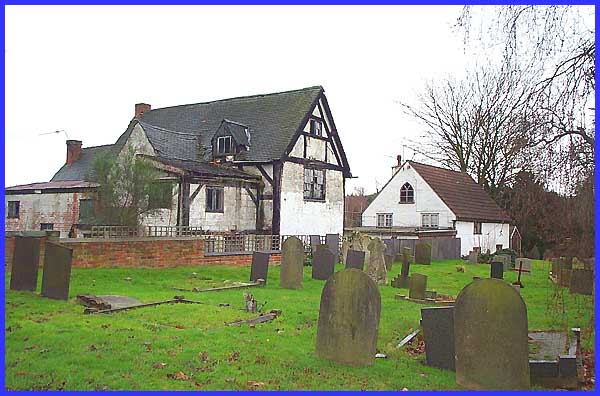
The churchyard is also a
good vantage point for Church Farm. This timber-framed building
with its steeply pitched, plain tile roof is a seventeenth century
construction but was party rebuilt and extended in the nineteenth
and twentieth centuries. Butter and cheese were still being made
here in the 1930s.
|
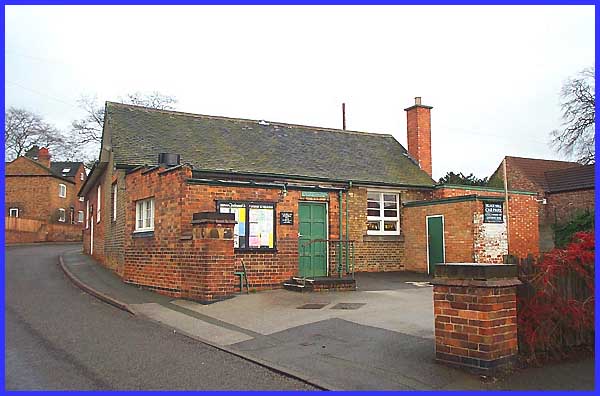
Following one of Ockbrook's many jittys,
I emerged onto Church Street against the Village Hall. According
to the leaflet, the hall has had a chequered history. It goes
on to say that the lower floor was once used as a stable and
coach house and the upper part was a girls' school room until
1828 when Mr Pares of Hopwell Hall paid for a new building. I
presume this is the "new" building as I could not detect
any evidence of an upper floor.
|
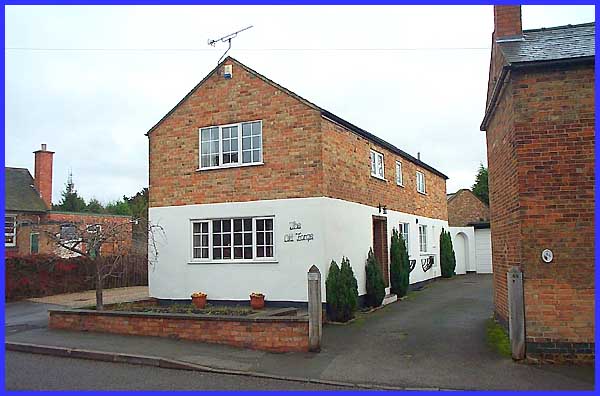
Next to the hall is the site of Ockbrook's
last blacksmith's shop. The name on the wall "The Old Forge"
points to the building's former use although some eighty years
have now passed since the shop closed its doors for business
in the 1920s.
|

On the opposite side of Church Street at
the corner of New Street, the large ground floor window is perhaps
a pointer to the fact that this building was formerly a shop.
I have a dim and distant memory of the shop when it was still
trading in the 1970s. It opened as a shop in 1902 and it was
the daughters of the founders, Mr and Mrs Henry Plant, who carried
the business on until 1969. The sisters sold the business and
until its closure in the late 70's it was known as "Kenderdine's"
after the new owners. The shop was also one of five sites in
Ockbrook that took on the duties of the Post Office over the
years.
|

